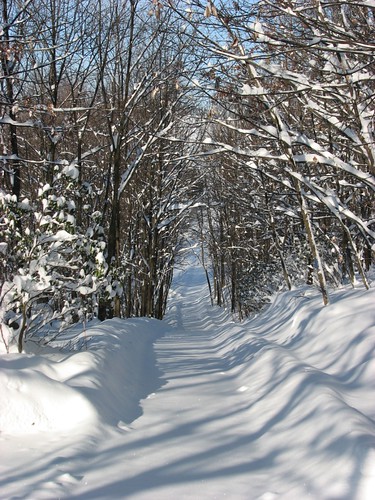Mark, I'm an ecologist down here in southern WI and I help a lot of land owners make decisions as to how to manage their property. I would say that talking to your county forester is an important step, but you should have a good idea what YOU want to do with the land before meeting with them. There are many programs that can be helpful to land owners, but be careful of getting locked into a managed forest agreement unless you are absolutely sure the management plan is what you want. I know several people who have bought or inherited land who are stuck with the managed forest agreement that does not suit the way they wish to manage their property.
The goal of
my business is to promote ecological restoration. Basically the idea is to use the conditions on the site and in the area before the first white settlers arrived as a model for how the woods should look now. This is entirely compatible with your goal of wood harvesting since, after all, Native Americans were harvesting wood for firewood and building material for thousands of years before the white man arrived, and did so in a "sustainable" manner.
A good first step is to find out what your property was like when surveyed in the mid-1800s. If you know your township and range, you can see what your area was like by looking at the
Wisconsin Public Land Survey Records.
Next, take a look around your property at what are the dominant plants, in your case, trees. Remember that land use history has changed the area tremendously, but one clue you can use to get a better understanding of the sites history is to focus on the largest tree specimen. Once you have a good feel for what is there,
this website by the WI DNR should help you understand your particular community type a little better. Its a great website with a lot of great information.
Even if you decide that wood harvesting is your main objective, all of this information will provide you with knowledge to help you make sound decisions.
Down here the main management goals are to promote oak regeneration (because on most sites they are no oak seedlings and saplings) and provide diverse structure for good wildlife habitat. If you do start thinning your woods, be sure to leave a lot of dead standing trees and downed woody debris for wildlife habitat. Try to manage the land in such a way that provides for structural as well as species diversity, as this will provide more resources for wildlife and for you (for example a sunny spot in the woods might be a good place to harvest raspberries, while a wet spot might have blueberries).





